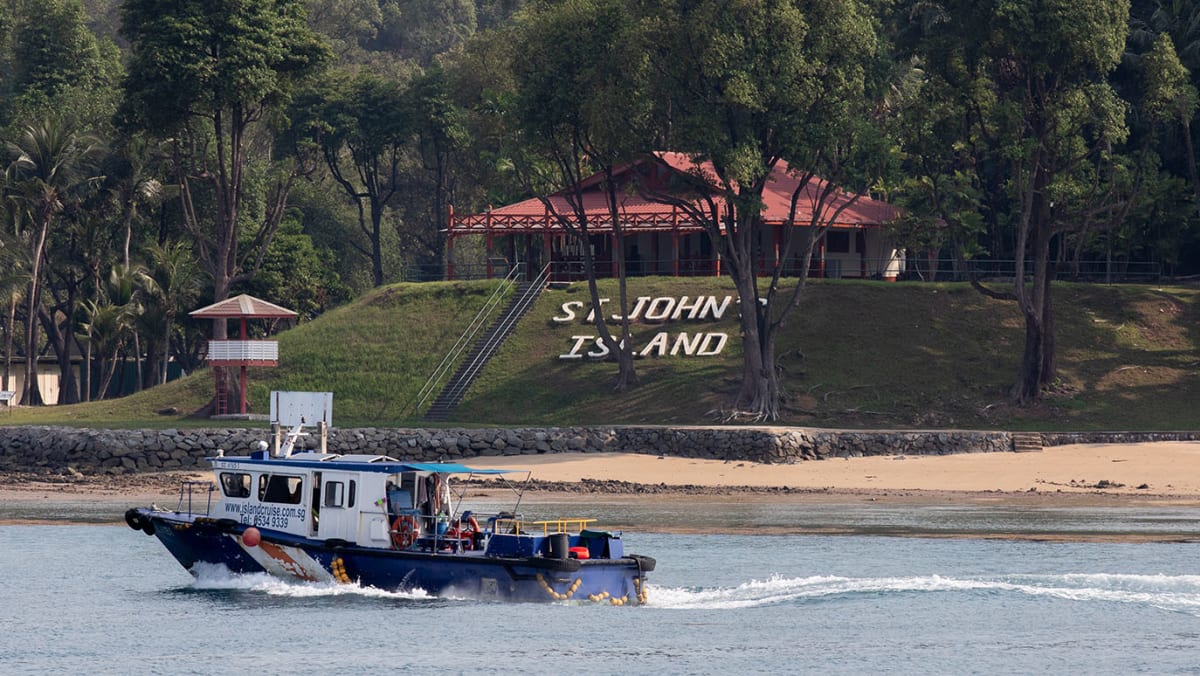
Each week, TODAY’s long-running Big Read series delves into the trends and issues that matter. This week, we look at what lies on Southern Islands such as Lazarus, Kusu, St John’s and Sister Islands and why people visit them. This is a shortened version of the full feature, which can be found here.
 By
By
Deborah Lau
Once home to “orang laut” (sea people), Lazarus Island has acquired a new sheen of late, thanks to its eco-friendly tiny houses and a slew of new developments — including a sea sports facility, “gourmet” convenience store, and an upcoming safari glamping experience from December.
Nearby, Kusu Island is once again buzzing with activity as it kicked off its annual pilgrimage season on Oct 15.
Beyond these, however, the other Southern Islands have attracted less public attention, and their development plans remain fuzzy.
In response to TODAY’s queries, an Urban Redevelopment Authority spokesperson said the Southern Islands are intended for “recreational and complementary uses” in the long term.
The spokesperson added that there are “no imminent development plans”, and that the necessary environmental studies would be conducted prior to such plans being made.
“When we talk about coral reef habitats, the Southern Islands are unparalleled. I will say St John’s is one of the best reefs in Singapore that are near the beach — unless you go to (Pulau) Hantu, but even Hantu is a bit harder to fish at,” Mr Lin, a bioengineering student at the Nanyang Technological University (NTU), told TODAY.
A stone’s throw — or a ferry ride — away from St John’s Island is the 8.5ha Kusu (tortoise in Hokkien) Island.
Kusu (tortoise in Hokkien) Island houses two religious sites — a hundred-year-old Chinese temple, and a Malay Keramat (or shrine) — and a tortoise haven. The island houses hundreds of tortoises, which can be found at two spots: Tortoise Sanctuary and Turtle Lagoon.
A Penang native, who wanted to be known only as Madam Lee, has visited Kusu Island each year during the pilgrimmage season for more than a decade — apart from the time when travel curbs were imposed by the Malaysian authorities during the pandemic.
Speaking to TODAY in Mandarin, the 68-year-old retiree said that she visits the Tua Pek Kong temple to pray for her health, her family’s business, and for abundant wealth.
Asked why she is willing to make the arduous trip — which involves an almost 10-hour bus ride from her hometown in Penang, followed by a half-an-hour ferry ride from mainland Singapore — Mdm Lee said the Tua Pekong Temple is believed to bring good luck.
“On our tour bus, without fail, two to three people will strike it big (in the lottery) every year following the trip,” said Mdm Lee, who herself had won a small sum in the past after returning home.
The Sisters’ Islands, while currently closed for enhancement works, are made up of two islands separated by narrow but deep channels.
Big Sister’s Island (or Pulau Subar Laut) serves as a platform for conservation, outreach, education and recreation, while Small Sister’s Island (or Pulau Subar Darat), which is closed to the public, is zoned for conservation and research.
Diving at Sisters’ Islands forms a core memory for 30-year-old nature enthusiast Abel Yeo.
Mr Yeo told TODAY that his first ever visit to the islands had been unintentional, as he had won a chance to join a guided walk there with NParks through a photography competition.
Since then, he has returned to Big Sister’s Island twice — once for a biodiversity survey on its intertidal zone, and the second, for a recreational dive around both the shallow and deep Marine Park dive trails. He had also visited Small Sister’s Island once, for a permitted biodiversity survey.
On his experience at Sisters’ Islands, Mr Yeo said: “Diving there was different for sure. The trail alone was a great initiative not seen on other islands.
“There is also plenty of site-specific reading material there to (help one) better understand the marine life diversity that Sisters’ Islands was allocated to protect. It really is a conservation-centric location.”
Probably the most well-known, and biggest, of the Southern Islands outside of Sentosa, Lazarus today is a unique mix of natural and built environments — from its pristine beaches and clear waters, to its tiny houses, sea sports facility, and “gourmet” convenience store.
Enjoying the island’s new additions last Sunday afternoon were 46-year-old educator Yeong Shook Fern, and her friend, Ms Yong Yee Ling, 45.
Ms Yeong said the pair would spend two nights in the tiny houses on the island. The first half of their trip would be dedicated to a silent retreat, while the rest of the time would be spent exploring and trying out the new water activities.
Beyond serving as a day-trip destination or weekend getaway for domestic visitors, experts also spoke of the islands’ potential in propelling Singapore’s standing before international tourists.
If developed well, the enhanced offerings could even help Singapore to shed its reputation as a mere stopover or layover destination, the tourism experts added.
Dr Kevin Cheong, managing partner at placemaking and destination development advisory Syntegrate, said: “In Singapore’s city metropolis offering, one expects the compactness and accessibility to be our greatest advantage. This, however, may position Singapore as a destination that can be experienced in two to three days.
“The differentiated and contrasting position of the Southern Islands in the form of nature-based islands with rustic seclusion can help to shape tourists’ perception that Singapore is much more than a compact city of experiences.
“We must stop selling Singapore as a mere stopover or layover destination — we are not doing ourselves any justice.”
THE BOTTOMLINE
While the Southern Islands have plenty of potential, experts stressed the importance of striking a balance between development and conservation — and ensuring that new activities and built infrastructure do not detract from the islands’ original appeal, nor come at a hefty cost to the environment and biodiversity.
To this end, environmental experts and conservationists said that a holistic approach — by consistently monitoring the developments’ environmental impact, conducting regular stakeholder engagement sessions, and ensuring developers and businesses adopt sustainable best practices — is key.
Ms Sam Shu Qin, a co-founder of non-profit organisation Our Singapore Reefs, which champions efforts to protect Singapore’s coral reefs and marine biodiversity, said: “We have marine biodiversity around the Southern Islands and some of our marine life — corals, seagrasses — are very sensitive to environmental changes.”
As such, it is important to monitor the health of marine life in the area, and the water quality, which may be affected by pollution, construction activities or inadequate sewage and waste management.